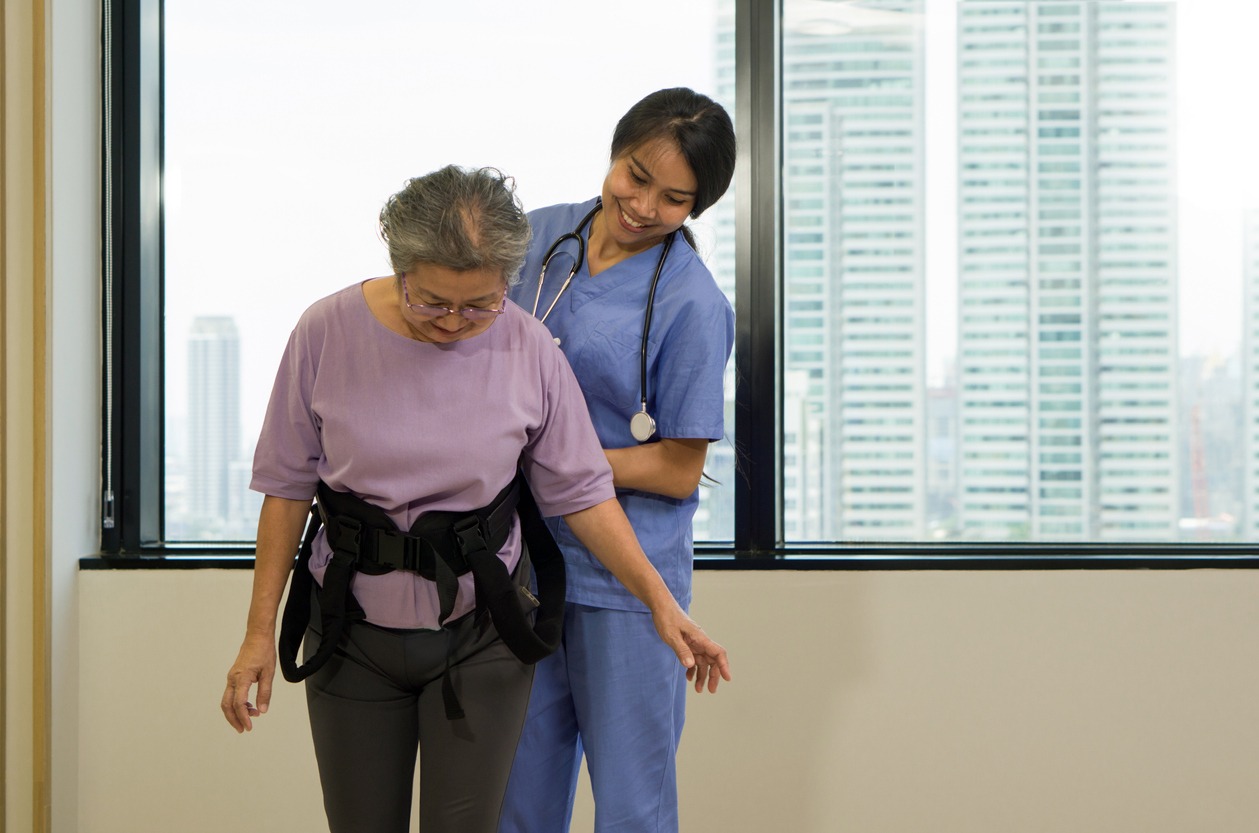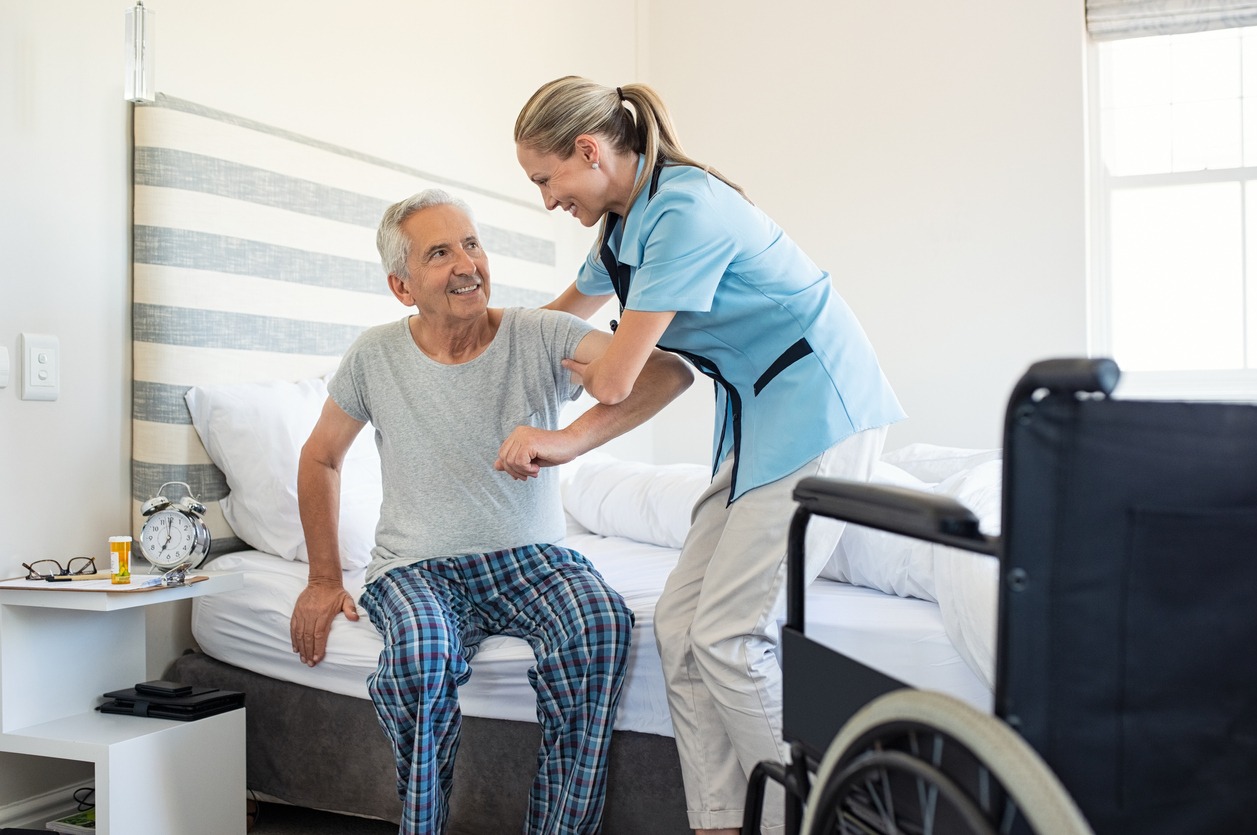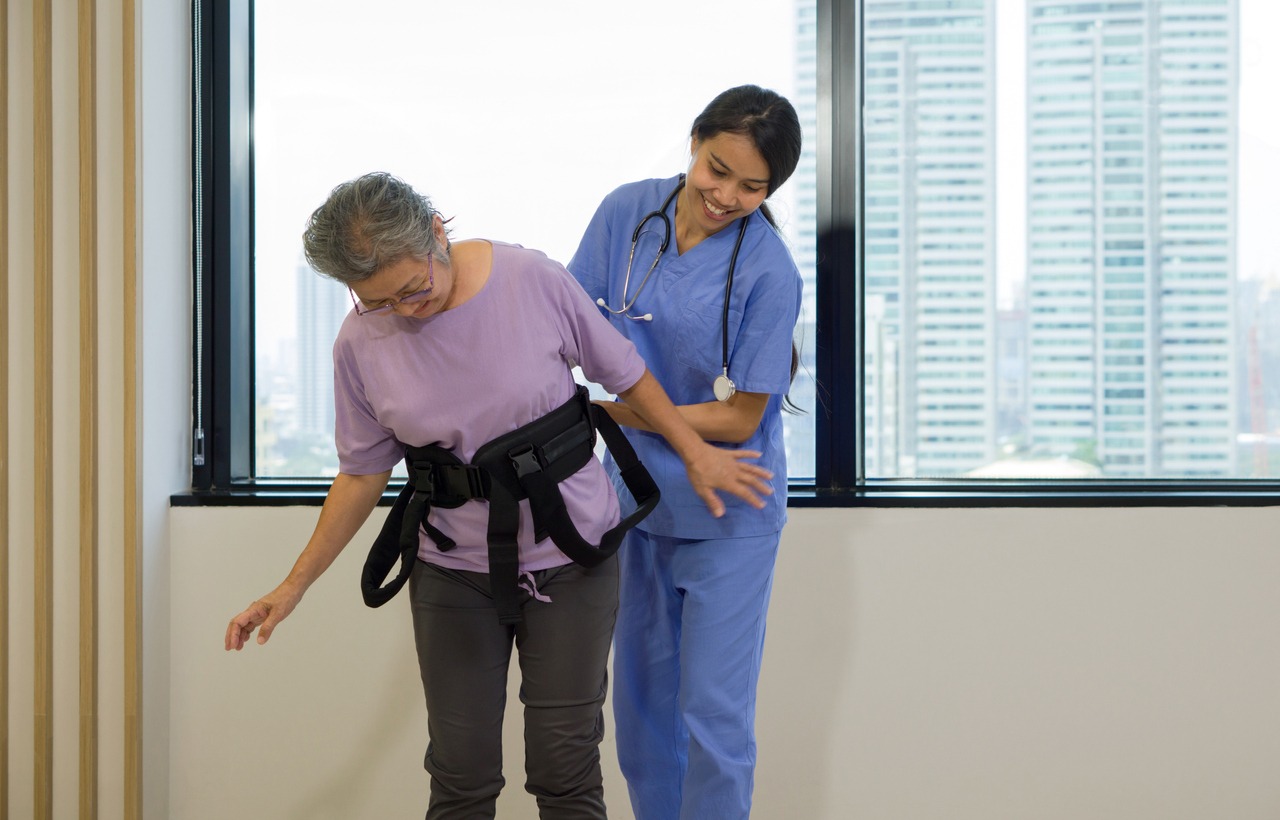As people age, more and more assistance is needed in carrying out daily tasks, which they used to accomplish independently and with ease when they were younger. Many elderly individuals and those with specific disabilities that limit their mobility use certain tools in order to help themselves while transferring from the bed to a chair or vice versa, along with other day-to-day activities. Among the many helpful tools for the elderly and people with disabilities is a gait belt. It is commonly used in nursing homes and hospitals, as well as by caregivers who are looking after a disabled or elderly loved one at home.
If you are required to lift someone regularly, it is a great idea to purchase a gait belt or a transfer belt. It can help reduce the struggles that come with lifting a person, and it also lowers the risk of back injury. It makes it easy for the caregiver to transfer the patient from one place to another, and it is also safer for the patient. If it is your first time hearing or reading about gait belts, you are probably curious about what it is exactly and how beneficial it is for caregivers. If that is the case, no worries, as we are here to help you. In this post, we are giving you more information about what a gait belt is and how it assists caregivers.
What is a Gait Belt?
A gait belt is a type of assistive device that is used by caregivers to safely transfer a person from a bed to a wheelchair, assist with sitting and standing, and aid with walking around. It is secured around the waist of the patient for the caregiver to grasp and assist in lifting or moving a person.[1] It is anywhere between 1.5 to 4 inches wide and up to 60 inches long. Gait belts can be made out of different materials, such as leather, canvas, or nylon. It also has a buckle, which makes it easier to use.
When a gait belt is properly used, it helps protect the patient from falling and the caregiver from acquiring back injuries as they lift or move the patient. It also aids patients with any injuries, brittle joints, or old age. However, when using a gait belt, the patient needs to be at least partially ambulatory. This means that they must be able to handle their own weight to some extent in order to use the belt. It is also very important to learn the proper body mechanics when using gait belts to avoid any injury.[2]
Uses of Gait Belts for Patient Mobility
Gait belts are commonly used at hospitals, nursing homes, physiotherapy clinics, and even at home when assisting people with weak joints, an injury, or older age. They are utilized for safe handling and mobility. There are a lot of uses for gait belts when it comes to patient mobility. Below are some of them:[2]
Transfer Assistance
A gait belt is commonly used to help move a patient from their bed to the wheelchair or vice-versa. It is a tool that is used by caregivers for better grip. To do this, the patient puts his or her arms around the waist of the caregiver, and the belt provides support to both the patient and the caregiver to avoid injuries. If you find it challenging to transfer a patient from their bed to the chair, you may also want to try using patient lifts. Check out our Guide to Selecting Patient Lifts to learn more about them.
Walking Assistance
For seniors and other people recovering from injuries, getting some exercise daily in the form of walking can be great. If the patient needs assistance with walking, a trained physiotherapist, caregiver, or family member may use a gait belt in order to get a good hold of the patient while supporting them off the bed and when the patient tries to walk on their own. The handles of gait belts offer a far better hold for patients compared to traditional padded ones.
Prevent Accidents
When patients are weak, they tend to easily fall. In such cases, a caregiver may support the patient using a gait belt along with the patient’s efforts. There are also padded gait belts with handles and leg support that may help caregivers keep a better hold of the patient. This way, accidents like falls can be prevented.
Prevent Back Injury
When assisting an injured patient or an old patient, it is possible that a caregiver may acquire an injury. But with the use of a gait belt, the risk of getting a back injury can be lowered. Also, the teeth of the buckle are placed safely to ensure maximum comfort to the patient while keeping the caregiver safe at the same time.
Benefits of Using a Gait Belt for Caregivers
If you are wondering how a gait belt may benefit a caregiver and the patient, below are some of the benefits of using gait belts:[2]
Comfortable and Safe to Use
A gait belt can be used to help a patient move from one place to another, particularly if he or she is unwell. Older patients who are frail or weak may get the support they need during the transfer without any risk of injury if the caregiver uses a gait belt. Most high-quality gait belts feature a non-slip plastic clasp or metal clasp to prevent the patient from sliding or falling from the bed or while walking.
Aids Caregivers to Focus on the Patient and Not on the Lifting
When caregivers use gait belts, the strain on their backs can be minimal. With this, they will be able to focus on the comfort and safety of the patient and ensure that they are transported carefully. The handles of the gait belt can also be utilized by the caregiver by placing their hand underneath the gait belt in order for the patient to remain steady.
Protect the Caregivers
When caregivers manually move a patient by lifting and placing them on a stretcher, there is a high chance for them to get injured. To prevent this from happening, the use of gait belts may help in providing relief to the carers when they are helping the patient move or walk.
Gait Belts are Good for Balance
A gait belt can be strapped around a patient’s midsection. It can help stabilize a weak or frail patient or one with a postural problem temporarily while they are being transferred. This way, the strain on the backbone will be reduced, as well as on the other parts of the body. Gait belts can also be utilized to assist patients while they walk if they are incapable of walking without any support.
Offer Flexibility Depending on Your Needs
Gait belts can be used either horizontally or vertically. This means that they suit a wide range of functions. For instance, they can be used for distances, such as across a large hospital or when transferring from the bed to the washroom. There are various types of gait belts available, and they have different designs and materials. There are some that also offer features like knee straps, waist straps, floor leads, and handles. Therefore, there is always one that will cater to the different needs of patients.
How to Use a Gait Belt Properly
As we’ve mentioned earlier, gait belts can be effective as long as you are using them correctly. They are handy when you have to lift someone, transfer them from the bed to the wheelchair, or simply assist them when they need to move. But the patient should be at least partially capable of holding onto their own weight. Whether you are a caregiver or just helping out a loved one, it is important to be accustomed to the proper body mechanics that are needed when using gait belts. This way, you will not overexert yourself and prevent injury.
Below are the different steps that you can take in order to use a gait belt properly:[1]
Step 1: Before putting on a gait belt around the patient, you first need to help them get to a sitting position, preferably on the edge of the bed or chair facing you. After that, inform the patient that you will be placing it around them and that it will be removed from their waist once the task has finished.
Step 2: Put the belt around the midsection of the patient with the buckle facing the front side. If the patient has bladder issues, avoid tightening the buckle directly over it. Instead, you can place it a bit off-center and make it more comfortable. You also need to make sure that the patient is wearing clothes before you put on the belt. If they have weak skin, place a towel between the belt and their body. But you should be able to slide two fingers in between the two to ensure comfort.
Step 3: Make sure that the gait belt is tightly snug in place. You should face the patient and bend your knees while keeping your back straight.
Step 4: To lift and transfer the patient, place your arms around the patient’s waist and place your hand under the belt with your palm facing outwards. This will help reduce the effect of tightening the belt. It is better to use belts that have a good grip for more safety. Make sure that you practice good body mechanics when lifting.
Step 5: While holding the belt with one hand, straighten your knees and place your other hand on the back of the patient.
If you are going to assist a patient with walking, you need to stand behind him or her and place your hand up under the belt, with your palm facing outward, using a firm grasp. Escort the patient as they walk, support them, and avoid dragging them around.
How to Find the Best Gait Belt
If you are looking for a gait belt that you can use in order to assist your loved ones, there is a wide variety of options available in the market today. The simplest ones are the easiest to use, and they look similar to a regular belt. However, they are mostly thicker and longer.
Aside from that, there are also other types of gait belts. Some of them come with convenient handles that are placed around the belt for better grip. These handles also allow more movement options for the patient. There are also some gait belts that feature straps that wrap around the thighs. They are effective in distributing weight evenly but may be difficult to put on a patient.
With the many options available, how would you be able to find the best one? If you have the same question in mind, below are some of the things you can consider:
Material
It is important to choose the right material when buying a gait belt. If you are looking for durability, nylon ones are great, and they are also easy to clean. If you want a comfortable gait belt, opt for those made of cotton, as they can help prevent skin irritations and reduce the discomfort of the patient. There are also leather gait belts available, which are also sturdy and comfortable to use.
Padded Handles
It is best to choose gait belts with padded handles, especially if you are going to use them to assist the elderly. This way, it will be easier to grasp and increase the safety and security of the patient. It is also beneficial for caregivers as it can decrease the chafing of the skin.
Number of Straps and Handles
When there are more handles and straps, the better the gait belt will be in terms of flexibility. Since the straps and handles are placed in different spots, it allows the patient more movement, which is comfortable and less stressful.
Patient’s Weight
You should also consider the weight of the patient before purchasing a gait belt. It is better to choose one with a universal size that can fit everyone. This will make it comfortable to use for the patient and the caretaker.
Washability
Finding a gait belt that is washable is great. It is always an added benefit if it is easy to clean and maintain.
Conclusion
Transferring patients from their beds to their wheelchairs, and vice versa, is among the most challenging tasks for most caregivers. It puts them at risk of acquiring back injuries due to the weight that they have to bear. Luckily, gait belts have been introduced, which makes it more comfortable and safer for caregivers to assist with the movement of patients, whether they are transferring from the bed to a chair or when they wish to walk around.
Gait belts allow caregivers to guide the patient, give additional support, and safely lower the patient to the ground if he or she begins to fall. With the right body mechanics and proper use, gait belts can certainly aid in keeping both the patient and the caregiver safe when moving from one point to another. We hope this post helped you learn more about what a gait belt is and its benefits to caregivers.
If your patient is often in a wheelchair, keeping him or her safe should be your priority. To do this, one of the best ways is to use wheelchair seat belts, which you can learn more about by reading our Guide to Choosing Wheelchair Seat Belts.
References
[1] Keiro, E. (2021, April 7). Gait belt. Keiro. Retrieved February 14, 2023, from https://www.keiro.org/fact-sheet/gait-belts
[2] McClain, B. (2020, September 5). Gait belt: What is Gait Belt, how to use a gait belt & their benefits: Medtrica. Medtrica Medical Manufacturing. Retrieved February 14, 2023, from https://medtrica.com/what-is-gait-belt-how-to-use-and-benefits-of-using-gait-belt/




